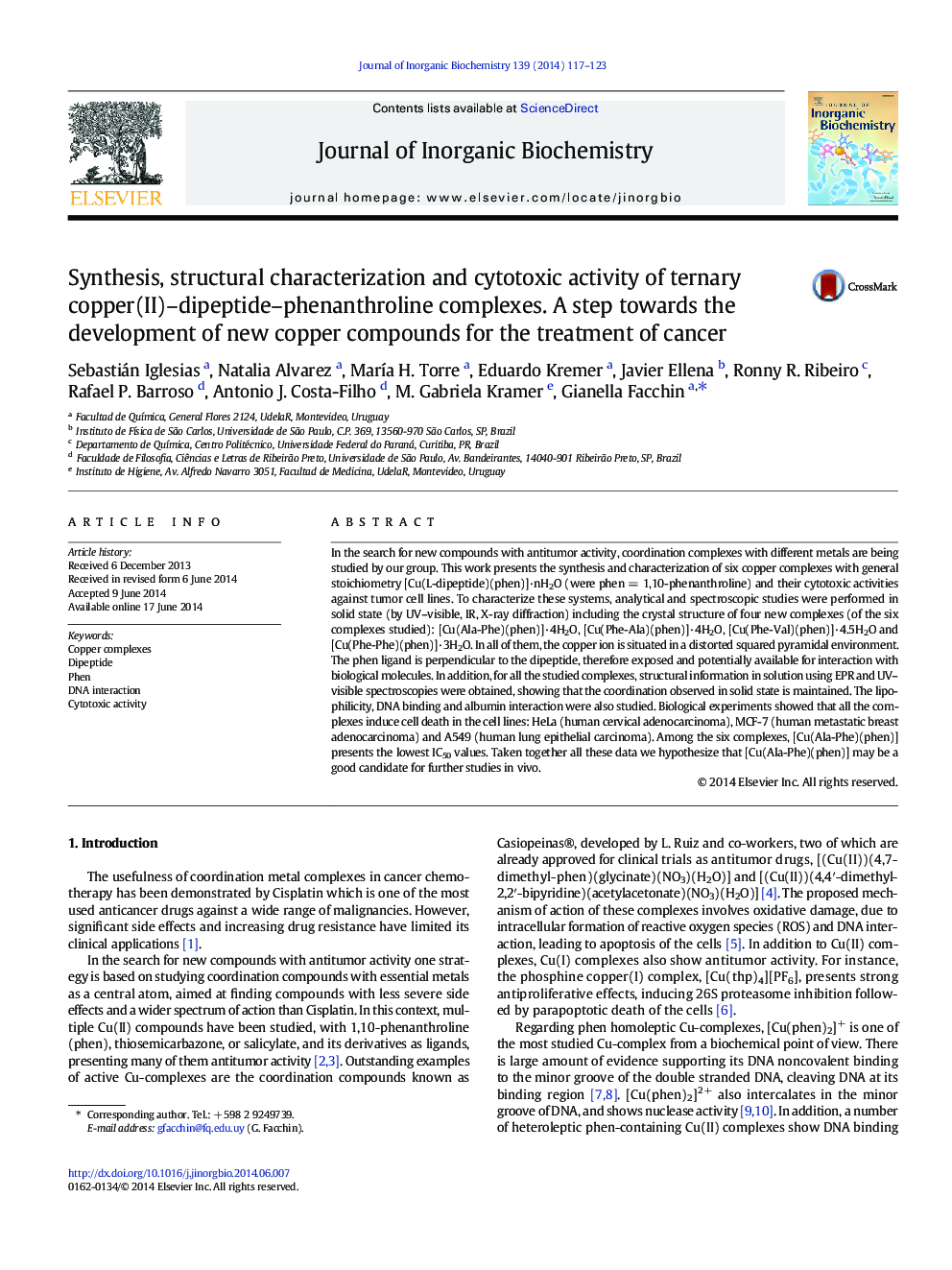| Article ID | Journal | Published Year | Pages | File Type |
|---|---|---|---|---|
| 1316661 | Journal of Inorganic Biochemistry | 2014 | 7 Pages |
In the search for new compounds with antitumor activity, coordination complexes with different metals are being studied by our group. This work presents the synthesis and characterization of six copper complexes with general stoichiometry [Cu(L-dipeptide)(phen)]·nH2O (were phen = 1,10-phenanthroline) and their cytotoxic activities against tumor cell lines. To characterize these systems, analytical and spectroscopic studies were performed in solid state (by UV–visible, IR, X-ray diffraction) including the crystal structure of four new complexes (of the six complexes studied): [Cu(Ala-Phe)(phen)]·4H2O, [Cu(Phe-Ala)(phen)]·4H2O, [Cu(Phe-Val)(phen)]·4.5H2O and [Cu(Phe-Phe)(phen)]·3H2O. In all of them, the copper ion is situated in a distorted squared pyramidal environment. The phen ligand is perpendicular to the dipeptide, therefore exposed and potentially available for interaction with biological molecules. In addition, for all the studied complexes, structural information in solution using EPR and UV–visible spectroscopies were obtained, showing that the coordination observed in solid state is maintained. The lipophilicity, DNA binding and albumin interaction were also studied. Biological experiments showed that all the complexes induce cell death in the cell lines: HeLa (human cervical adenocarcinoma), MCF-7 (human metastatic breast adenocarcinoma) and A549 (human lung epithelial carcinoma). Among the six complexes, [Cu(Ala-Phe)(phen)] presents the lowest IC50 values. Taken together all these data we hypothesize that [Cu(Ala-Phe)(phen)] may be a good candidate for further studies in vivo.
Graphical abstractIn this work new Cu–dipeptide–phenanthroline complexes were studied. They were characterized in solid state, including four new crystalline structures, and in aqueous solution. Their interaction with DNA and lipophilicity was studied. The complexes present good cytotoxic activity on tumor cell lines.Figure optionsDownload full-size imageDownload as PowerPoint slide
